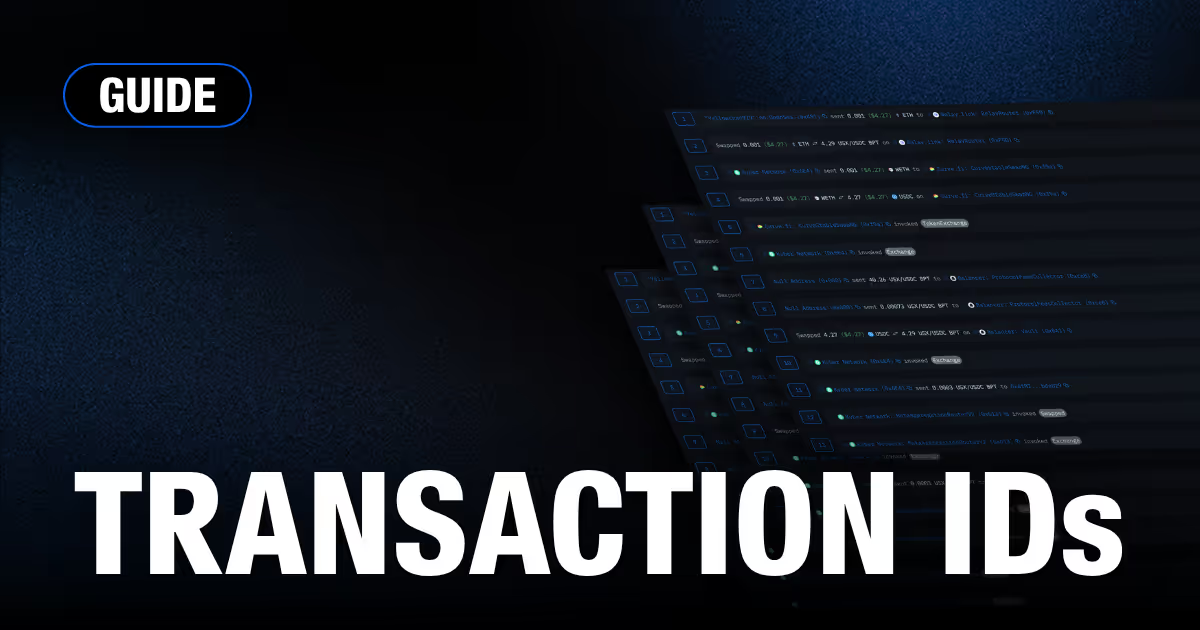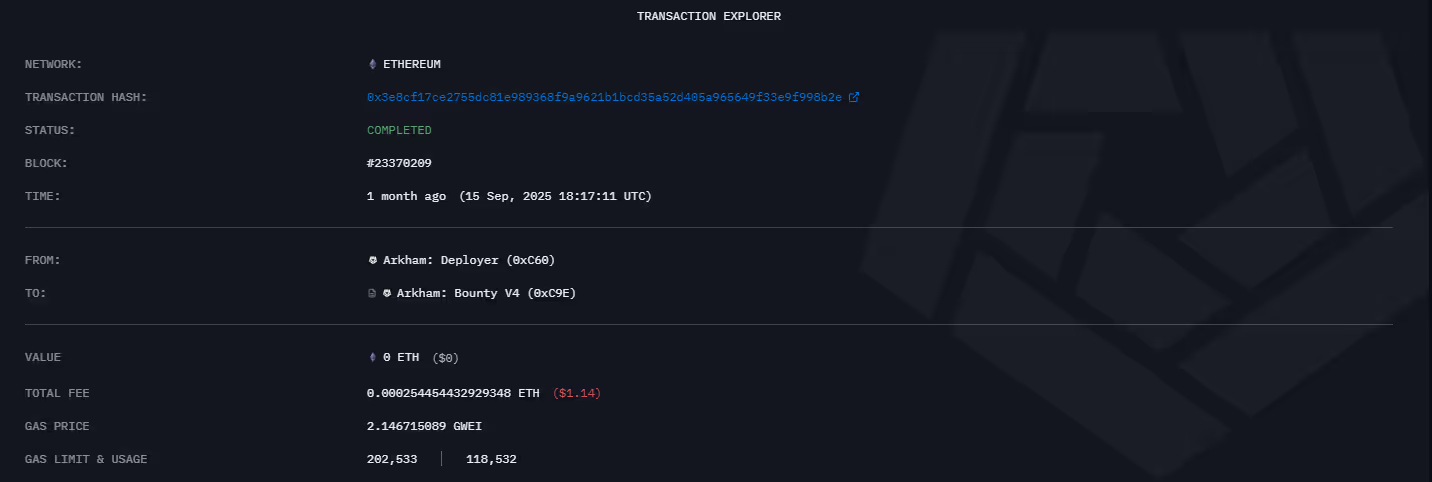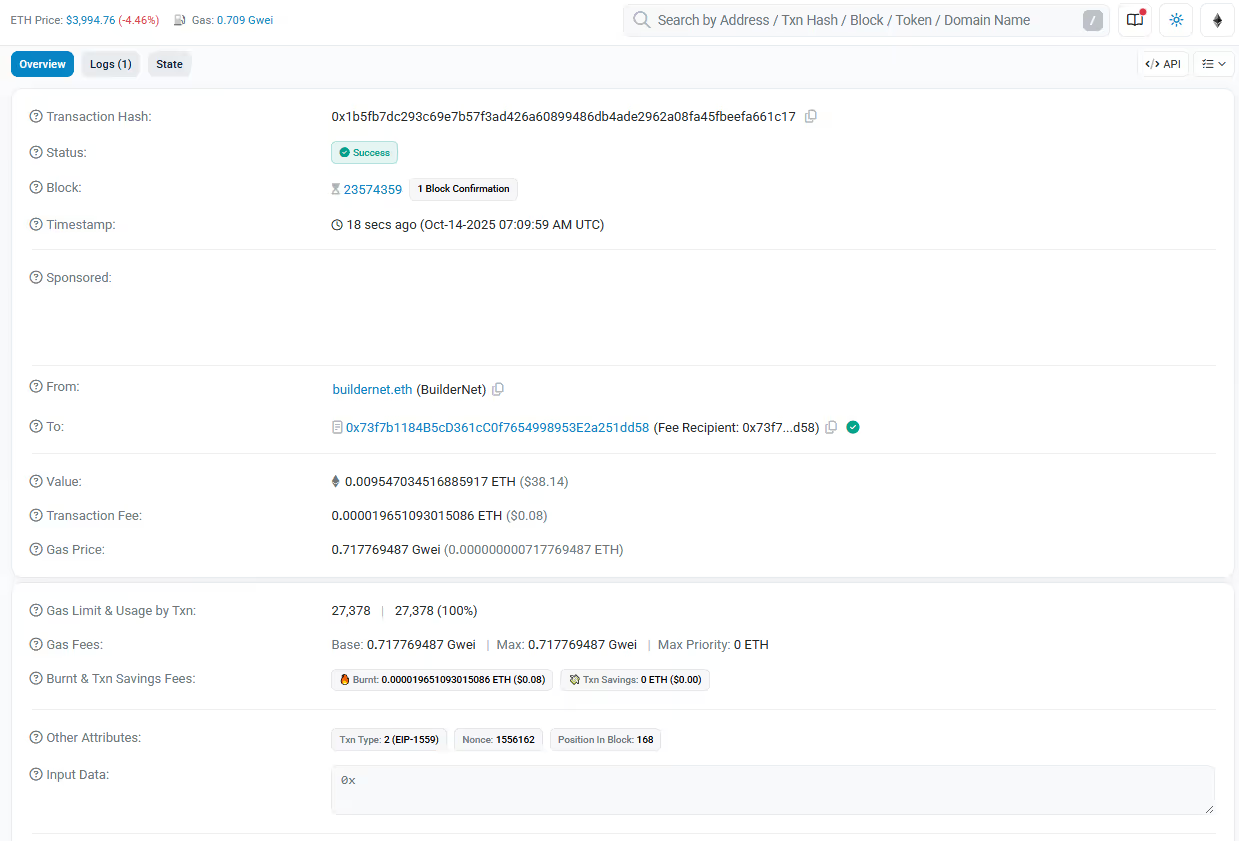November 24, 2025
at
4:20 pm
EST
MIN READ
TXID: How to Find, Track, and Understand a Crypto Transaction Hash

A TXID, or transaction hash, is an alphanumeric identification number used to uniquely label each and every transaction on the blockchain.
Block explorers, wallets, and nodes use these TXIDs to identify specific transactions on-chain. TXIDs can be thought of as a receipt number that is associated with a blockchain action. In this article, we will explain TXIDs in detail so you can understand how to analyse and trade more effectively.
What is a TXID?
A TXID is a cryptographic hash of a blockchain transaction’s raw data. When a transaction is created, the blockchain client takes all of the transaction data (inputs, outputs, amounts, signatures, etc), encodes it, and then runs it through a hash function to create the TXID. It is worth noting that different blockchains use different hashing processes. Bitcoin for example, uses a double-hash of SHA-256. Ethereum uses Keccak-256 on its RLP (Recursive Length Prefix) encoded transaction fields.
TXIDs are deterministic. This means that the same input will always lead to the same resulting hash and two different transactions will never have the same hash. Additionally, TXIDs are practically impossible to fake, since any change in transaction data will lead to a completely different hash.
Importantly, TXIDs are a permanent reference to a specific transaction throughout a blockchain’s history. This allows blockchains to maintain an immutable, verifiable ledger.
Importance of TXID:
TXIDs are more than just unique identifiers for transactions on a blockchain. TXIDs serve an important role in helping ensure transparency, integrity, and immutability.
Because TXIDs are derived from all transaction data, they are both unique and immutable allowing them to function as a trustless identifier. There is no need to “trust” anyone’s TXID label, since every blockchain node can independently verify whether or not a TXID is correct. TXIDs also enable transparency by allowing any user to look up the details of a transaction, the block a TXID was included in, and the number of confirmations it has. Wallets, exchanges, and explorers all show TXIDs for this reason.
TXIDs are also very important for cryptographic security and consensus. Every single node on a blockchain will independently verify a transaction’s structure, hash it to get the TXID, and then check to make sure the inputs and outputs are valid. As a result, each node will independently agree on what transaction on a blockchain corresponds to what TXID. Even if two nodes have never communicated with each other before, both nodes will know that a specific TXID refers to the exact same data, leading to a decentralized consensus.
In UTXO-based blockchains such as Bitcoin, TXIDs are derived from all transaction data and each input in a transaction references an output from a previous TXID. As a result, transactions are linked together through their TXIDs and any user can trace the entire history of a Bitcoin from its most recent transaction all the way back to the original mined transaction.
How To Find a TXID:
A TXID is a long string of letters and numbers, typically 64 characters and hexadecimal. On Ethereum, TXIDs are prefixed with 0x. In a crypto wallet, you can typically click on a transaction and view it on a block explorer. From there, you can find the transaction hash, which is the TXID. Similarly, exchanges will allow you to view the deposit or withdrawal transaction on a block explorer, which can be used to find the TXID. If you already know the wallet address in mind, then you can go directly to a block explorer and search the address. From there, go to the wallet’s transaction history, find the specific transaction you’re looking for, and view the TXID there.
Useful Things to do with a TXID:
Once you’ve located the TXID of interest, there are multiple useful things you can do with it.
TXIDs allow you to verify whether or not a transaction really occurred. Paste the TXID into a block explorer and confirm that the transaction was included in a block with confirmations. Confirm if the transaction was successful and verify the timestamp and block number. TXIDs also allow you to track the progress of a live transaction. Looking up the TXID of an ongoing transaction will allow you to know if the transaction is still in the mempool or not, which block the transaction got included in, how long confirmation times are, and how much gas was paid to broadcast the transaction. If the transaction has been stuck for a while, the TXID can be used to check if transaction fees were too low as well.
TXIDs also allow users to trace the movement of money across a blockchain. Because all on-chain transactions reference previous TXIDs, users can use the historical TXIDs to see how money has moved around. On Bitcoin, users can see where a coin originated and where it has been since. On Ethereum, users can see what smart contracts were called and check token transfers under a TXID. TXIDs also function as a way for users to look into suspicious or fraudulent activity. They can be provided as evidence to law enforcement and used to track stolen funds on-chain.
Lastly, TXIDs are also very useful for accounting and analytics. As immutable receipts, they can be ingested into accounting systems to record transactions. These accounting systems can use TXIDs to prove that asset transfers occurred without needing to rely on private user data. Analytics services can utilize TXIDs to gather data on gas fees, confirmation times, and token flows. Other stats and metrics such as block inclusion time and network congestion metrics can be checked as well.
Ways to Find Transaction Hash Info on Different Platforms

You can start by copying your TXID (from your wallet, exchange, or sender) and going to the appropriate block explorer for the chain you’re interested in. The Arkham Intel platform supports most major blockchains and is an industry-leading blockchain analysis tool. Paste your TXID into the search bar and hit enter.

You should be able to see a wide range of information such as transaction status, sender and receiver addresses, total value transferred, timestamp, gas/fee info, and block height.

Users can also scroll down to read Arkham’s AI transaction analysis, which clearly summarizes what occurred in a blockchain transaction.

Other block explorers such as Etherscan exist as well. However, Etherscan and many other blockchain explorers often only support one chain. You can find most of the same information on Etherscan on Arkham.













































































































































































































































.png)